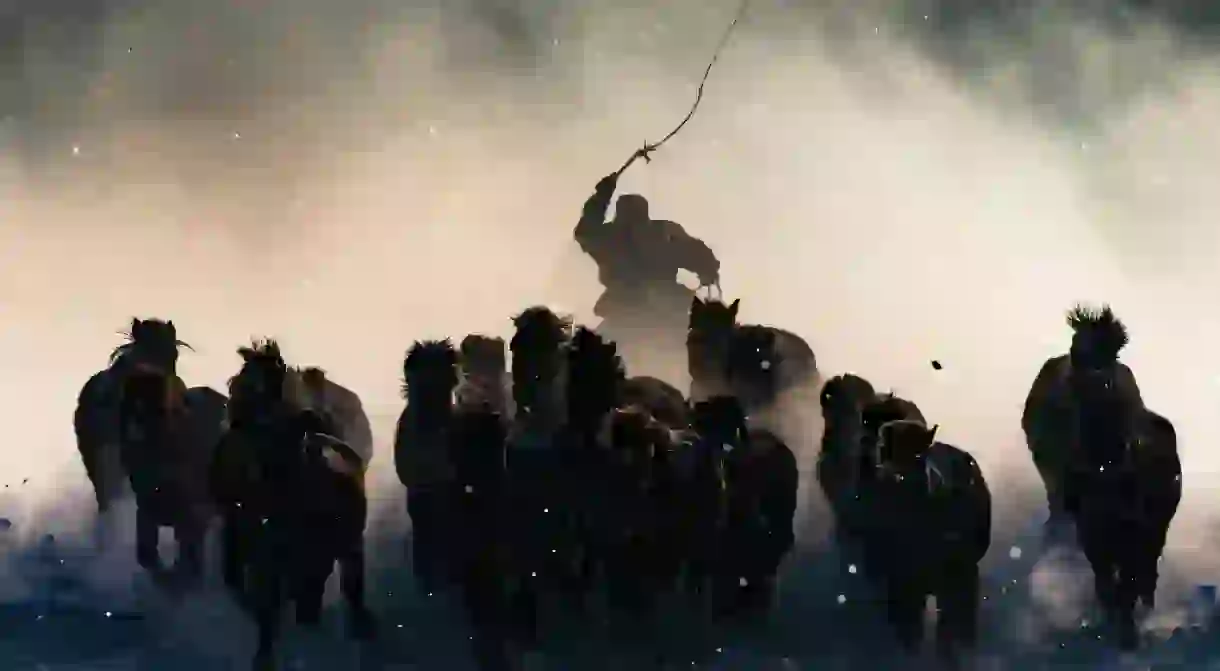An Interview With Anthony Lau, National Geographic’s Travel Photographer Of The Year

A breathtaking image of a horseman riding through the snowy mist captured in Inner Mongolia won Anthony Lau the prestigious title of National Geographic’s Travel Photographer of the Year. Lau is a Hong Kong-based amateur photographer who has traveled far and wide with his camera in hand. We interviewed him to find out more.
Congratulations on winning the title of 2016 National Geographic Travel Photographer of the Year! Were you surprised?
Indeed, it was a pleasant surprise! While it wasn’t the first time I had entered the contest, to me it was always more about the act of participation; I wasn’t actually eyeing the prize. So when I got the notification email from Nat Geo, I found it so hard to believe at first that I thought it was some kind of phishing scam!

Your winning entry, Winter Horseman, is surreal. It looks like a shot from a fantasy movie. What’s the story behind this photo?
Although I’d visited Saihanba National Forest Park in Inner Mongolia before, it was my first time there carrying full gear at minus 25 degrees Celsius, hiking through the snow for photos. Saihanba National Forest Park is a famous hunting ground for old Chinese royal families, and is also part of Mulan Paddock, one of the few natural grasslands in that part of China. ‘Saihanba’ is a term with mixed origins from Mongolian and Chinese, meaning ‘beautiful and high mountain’. There are plenty of opportunities to capture horsemen riding through the snow, and it was something I’d always wanted to photograph.
So in the winter of 2015, I got a brief window of time between my work and family duties for a short photography holiday and decided to visit this park again; mostly because I really liked that part of China, and also because my familiarity with the area would save me the effort of having to scout for good locations. On a freezing morning after a sunrise photo session, I was taking a nap in the four-wheel drive when my tourmate woke me up. There was a rider showing off his skills with his horses. I quickly grabbed my gear and started shooting. The light was good, with morning mist forming up – then unfortunately my lens connector stopped working and left me with manual focus as well as a frost-covered electronic viewfinder due to my breath. So I had to anticipate the routing of the horses, adjust my shooting position and utilize trap focus to nail that shot.

Tell us a bit about your background. When did your interest in photography start?
My brother taught me how to use a camera when I was in primary school, but my interest in photography actually started many years after when my elder son was born ten years ago. Then, in 2012, I embarked on my first photo trip to Inner Mongolia.

What draws you to a particular scene or subject as a photographer?
Captivating nature’s beauty, contrasting light and shadow, and exploring the intriguing relationship between subjects and mesmerizing patterns are things that fuel my urge to press the shutter. For example when I visited Melbourne earlier this year, I woke up at 5am and noticed that the sun was rising in between the buildings in front of my hotel, right above the St Paul’s Cathedral of Melbourne. But I didn’t act fast enough to capture that moment. Fortunately, I was staying in the same hotel for another day. With my gear ready and the blessing of another clear morning sky, I was able to get the composition I wanted.

You’ve taken photographs in exotic locations like Inner Mongolia and Northern Xinjiang. Why did you decide to take photographs in such remote places?
China is developing really fast and natural scenic spots may become completely different as more infrastructure is built. So I tried to visit those famous photography spots in China before that happened.

Your photos from Inner Mongolia are unique, of course, but I notice your website also includes common subjects in Hong Kong, like Victoria Harbour and the Tian Tan Buddha. These are favorite subjects for photographers. It seems you’re not afraid of being clichéd?
As a Hongkonger I found it pretty comfortable to capture these subjects. As a matter of fact, the subject is one of the factors that defines the quality of a photo. Other elements like the composition, the light and shadow and the message it conveys are important as well.

What do you want to capture in your photographs? Is it the beauty of the outdoors or something else?
An expression. An expression of how I see the world, nature, the city and how people interact, and then to capture that defining moment through my photos.

Any upcoming trips planned? Do you have a dream photography location?
I’ll be photographing the polar light in Finland later this year, and of course I’ll be joining Nat Geo’s award trip to Churchill, Canada to photograph polar bears in November 2017! In between those trips, I’m trying to slot in one or two more, but it all depends on my work and family duties. There are just too many ‘dream locations’ for me – even just within China, there are more than a dozen places I’d like to visit. But if I have to name just one, it would be the journey from Lhasa to the Everest Base Camp. Hopefully, I’ll be able to do it within one or two years.

What’s next for you as a photographer?
I guess I’m just going to keep calm and press the shutter. And I’d like to invite everyone to visit my personal website or follow me on Instagram to see more of my work.














